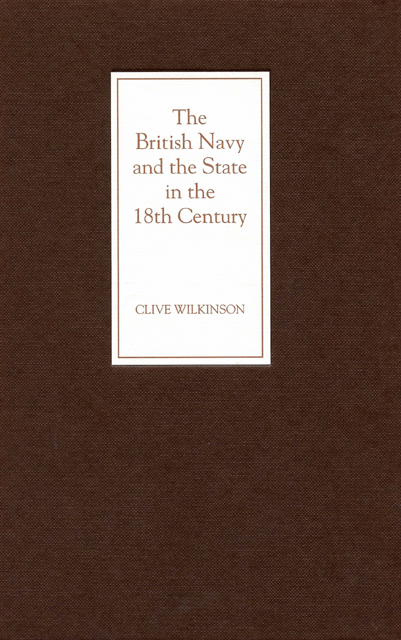Book contents
- Frontmatter
- Contents
- Foreword
- Acknowledgements
- Abbreviations
- 1 The Myth of a Paper Fleet
- 2 Government and the Navy
- 3 ‘Treating the House with Contempt’: British Naval Finance in the Eighteenth Century
- 4 Crisis and Victory: The Navy, 1714–62
- 5 The Peace Establishment I: Demobilization and Retrenchment, 1763–6
- 6 The Peace Establishment II: Stability, Innovation, and the Falklands, 1766–70
- 7 Sandwich, Parliament and the Paper Fleet, 1771–9
- 8 Conclusion
- Appendix 1 Extraordinary Estimates 1750–76
- Appendix 2 Extraordinary Estimate, Navy Office, 2 February 1767
- Appendix 3 Estimate of Monies Needed (ADM B 177, 5 August 1765)
- Appendix 4 ‘Plan of Expense of His Majesty’s Navy for the Year 1768’ (ADM B 181, 27 May 1768)
- Appendix 5 Account of the Course of the Navy (Fragment, ADM B 183, 6 August 1770)
- Appendix 6 A List of the Ships of the Royal Navy, 1 January 1763, with the Condition of the Navy on Survey (ADM 7 553)
- Appendix 7 British Battlefleet 1714–80
- Appendix 8 Environmental Impact on the Navy’s Ships, 1710–80
- Appendix 9 Naval Finance and Expenditure
- Appendix 10 The Procedure for Voting a Supply to the Navy
- Bibliography
- Index
1 - The Myth of a Paper Fleet
Published online by Cambridge University Press: 18 March 2023
- Frontmatter
- Contents
- Foreword
- Acknowledgements
- Abbreviations
- 1 The Myth of a Paper Fleet
- 2 Government and the Navy
- 3 ‘Treating the House with Contempt’: British Naval Finance in the Eighteenth Century
- 4 Crisis and Victory: The Navy, 1714–62
- 5 The Peace Establishment I: Demobilization and Retrenchment, 1763–6
- 6 The Peace Establishment II: Stability, Innovation, and the Falklands, 1766–70
- 7 Sandwich, Parliament and the Paper Fleet, 1771–9
- 8 Conclusion
- Appendix 1 Extraordinary Estimates 1750–76
- Appendix 2 Extraordinary Estimate, Navy Office, 2 February 1767
- Appendix 3 Estimate of Monies Needed (ADM B 177, 5 August 1765)
- Appendix 4 ‘Plan of Expense of His Majesty’s Navy for the Year 1768’ (ADM B 181, 27 May 1768)
- Appendix 5 Account of the Course of the Navy (Fragment, ADM B 183, 6 August 1770)
- Appendix 6 A List of the Ships of the Royal Navy, 1 January 1763, with the Condition of the Navy on Survey (ADM 7 553)
- Appendix 7 British Battlefleet 1714–80
- Appendix 8 Environmental Impact on the Navy’s Ships, 1710–80
- Appendix 9 Naval Finance and Expenditure
- Appendix 10 The Procedure for Voting a Supply to the Navy
- Bibliography
- Index
Summary
your fleet is the security and protection of your trade, and both together are the wealth, strength, security and glory of Britain.
Lord Haversham (1707)Britain started and ended the eighteenth century celebrating its Navy. In the interval the Navy played a key part in establishing an empire in America and India, only to lose the former. During much of the third quarter of the eighteenth century, the time when the American colonies were lost, the Navy and its administration was severely criticized on numerous occasions. Among other things this book examines the justification for that criticism, examining the relationship between the Navy and the state to determine what was wrong with the Navy and its ships on the eve of the War of American Independence. There was a stark contrast between the three wars broadly covering the middle of the century. The war, beginning in 1739, over Captain Jenkins’ ear and becoming the War of the Austrian Succession, was entirely successful as a maritime war even though the peace negotiated in 1749 provided no more than a breathing space for Britain and France in their struggle for empire. The war left the Navy’s affairs in some disorder. Yet, after a disappointing start, the Seven Years’ War, in which the opening shots were fired in America in 1755, was the most successful war ever fought by Britain. At the Peace of Paris in 1763, Britain had gained Canada and the beginnings of an empire in India.
The War of American Independence saw in its early stages a decisive check to Britain’s seapower, contributing to the loss of an American empire. Much has been written on why Britain’s seapower suffered a setback and some of this has necessarily concentrated on the period between the Peace of Paris in 1763 and 1776 when the Americans declared their independence. Criticism has centred for the most part on the inadequacy of the Navy’s ships and upon the shortcomings of the Navy’s administrators. There were too few ships, others were in a state of disrepair, and little had been done about it. The view that the administration of the Navy during the 1760s and 1770s was at best inept and at worst corrupt seems firmly established in much conventional historical literature.
It is hard to dispel the image of a parsimonious do-nothing post-1763 naval administration that elevated corruption, negligence and inefficiency to new heights.
- Type
- Chapter
- Information
- Publisher: Boydell & BrewerPrint publication year: 2004

